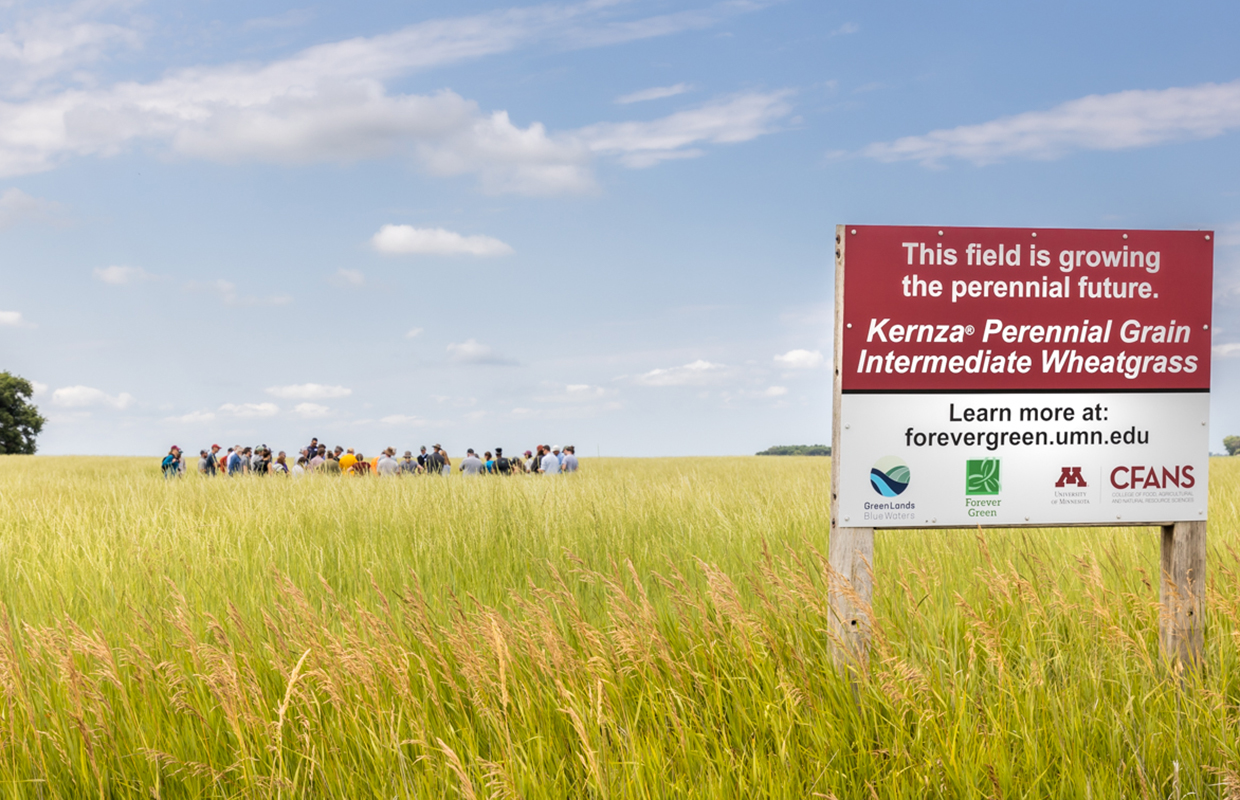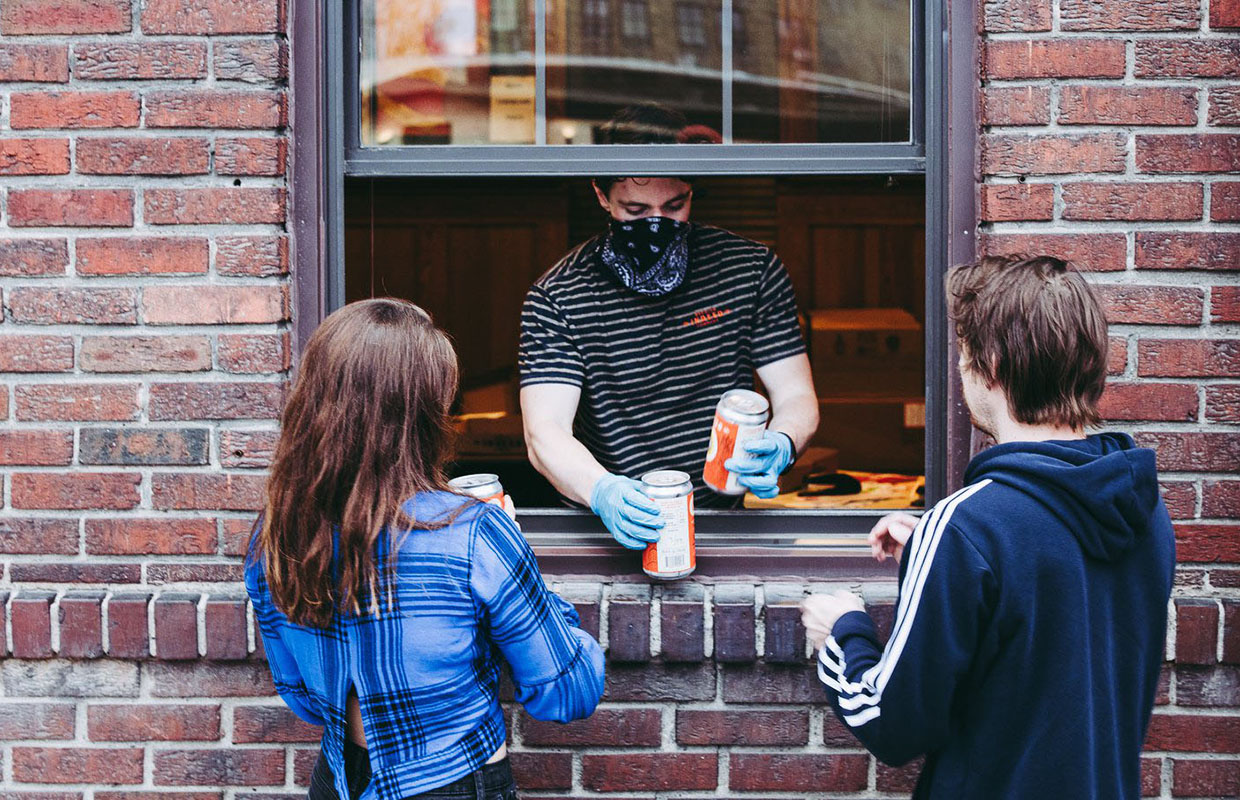
Although not yet a base grain used in brewing, the use of the uber-sustainable Kernza has become more and more popular and breweries like Dogfish Head, LUKI and Craft ‘Ohana have made efforts to understand the grain and see how it could be a more future staple for the craft beer industry.
Kernza is a regenerative wheat grass, explained Topa Topa CEO and founder Jack Dyer.
“The primary difference between Kernza and traditional barley is the root system,” he said. “Kernza plants have a root system that goes about 10-15 feet into the ground and the plant stays in the ground after harvest. The root systems promote soil health and sequester carbon. The perennial nature of Kernza and its capacity to sequester carbon, thrive in diverse ecosystems, and potentially require fewer inputs positions it as an environmentally sustainable option in agriculture, added Craft ‘Ohana Head Brewer, James Newman.
“It is pretty different from other grains in many aspects,” added Brad Miles, head of production at Arizona Wilderness. “Flavor-wise, it’s closer to kilned and toasted malts than it is to traditional wheat. It doesn’t have a husk, so if used in large volumes rice hulls would be needed to effectively lauter.”
Topa Topa, Arizona Wilderness, LUKI and Craft ‘Ohana were a few of 11 organizations that worked with Patagonia Provisions’ Good Grain Collective to give Kernza a shot and offer their feedback. Each brewery found unique ways to incorporate the grain as well as Topa Topa made a Hoppy Lager; Arizona Wilderness created an American-style lager; Craft ‘Ohana opted for a German-inspired Pilsner while LUKI created a Blonde Ale.
“We were expecting a very biscuit, dough flavor and it didn’t disappoint,” said LUKI co-owner Jeff Smith. “We like giving our Blonde Ales some wheat to increase the body, but we were really surprised how much nutty flavor came through during our trials.
“We haven’t done it yet, but it could really add some nice mouthfeel and flavors to complex stouts.”
Dyer said the Topa Topa beer was so well received that the brewery began canning it as well.
“The main goal we have is to continue to make the beer to hopefully help increase Kernza production so that the price can start to come down,” he said. “Currently that is the biggest constraint we have, as the price of Kernza is significantly higher than traditional barley at the moment.”
BREWER: Are there any technical challenges or tips you have for using Kernza for someone that hasn’t used it yet?
NEWMAN: If your brewery doesn’t have a hammer mill, consider purchasing Kernza in a mash-ready, flaked form. The kernels are smaller than barley, wheat, or even rye, allowing them to pass through a traditional roller mill unscathed. We used a small KitchenAid flour mill attachment powered by a corded drill and it took us about an hour to mill 55 pounds It was exciting, but not very fun.
MILES: Lauter assistance in the form of rice hulls if used in really large quantities, and the extract seems lower pound-for-pound compared to traditional wheat varieties. I also haven’t seen numbers for the diastatic power of Kernza. If traditional barley is a large percentage of the grist, it shouldn’t be an issue.
BREWER: What do you feel are great complementary hops that go with Kernza?
SMITH: We were sticking to noble varieties during our trials, but ultimately used some Willamette as an aroma hop as well to pair some spicy, floral notes from the hop. Not sure that any citrus or fruit dominant hops would play well with the nutty flavor.
DYER: We landed on a fun little hop combination that includes some new school hops. This beer is made with 100% organic materials, so our hop options were somewhat constrained. The Kernza does add a unique flavor to the beer and we found using some hops with some more tropical, berry and earthy tones compliment the Kernza quite well.
NEWMAN: We opted for Talus for bittering due to its typically balanced 1:1 ratio of alpha to beta—a feature highly prized in Pilsner recipes for imparting a balanced bitterness. Additionally, we chose Wakatu for aroma, a New Zealand-grown hop with lineage traced back to Hallertau, a traditional German variety. I think some classic PNW hops would do well with this grain. Given its resemblance to rye in terms of taste, a touch of piney and floral notes would complement the grain’s profile. That being said, I’m curious to see how modern American hops would pair with it.
BREWER: What flavors/aromas/mouthfeel did you expect … and didn’t expect? How did you use them to your advantage?
MILES: I had no preconceived notions on the flavor impact of Kernza. The flavor/aroma is nutty, which sets it apart as a lager in our portfolio.
NEWMAN: We expected the rye-like spiciness so we went with Wakatu for its flowery, citrusy, and slightly spicy notes to compliment it. What we didn’t expect was a hint of grassiness, but luckily, it blended nicely with Wakatu’s floral and citrusy vibes.
DYER: There is a slightly nutty characteristic to the Kernza when used in higher volumes, otherwise the malt bill in our Kernza lagers behave fairly similarly to traditional barley. The unique flavor is present and certainly there, but not at all overpowering.
BREWER: Do you have any ‘out of the box’ ideas for Kernza in the future?
NEWMAN: Not really “out of the box”, but I’d like to see what malted and slightly kilned or even roasted Kernza could bring to the table. Experimenting with these processes might yield interesting and unique characteristics, making it a compelling addition to darker beer recipes.
MILES: If the market would bear it, I’d love to brew a Brown Ale. I’d also like to try brewing a Hazy IPA to see how Kernza compares to normal wheat.
Photo courtesy Patagonia Provinions/Amy Kumler






Be the first to comment